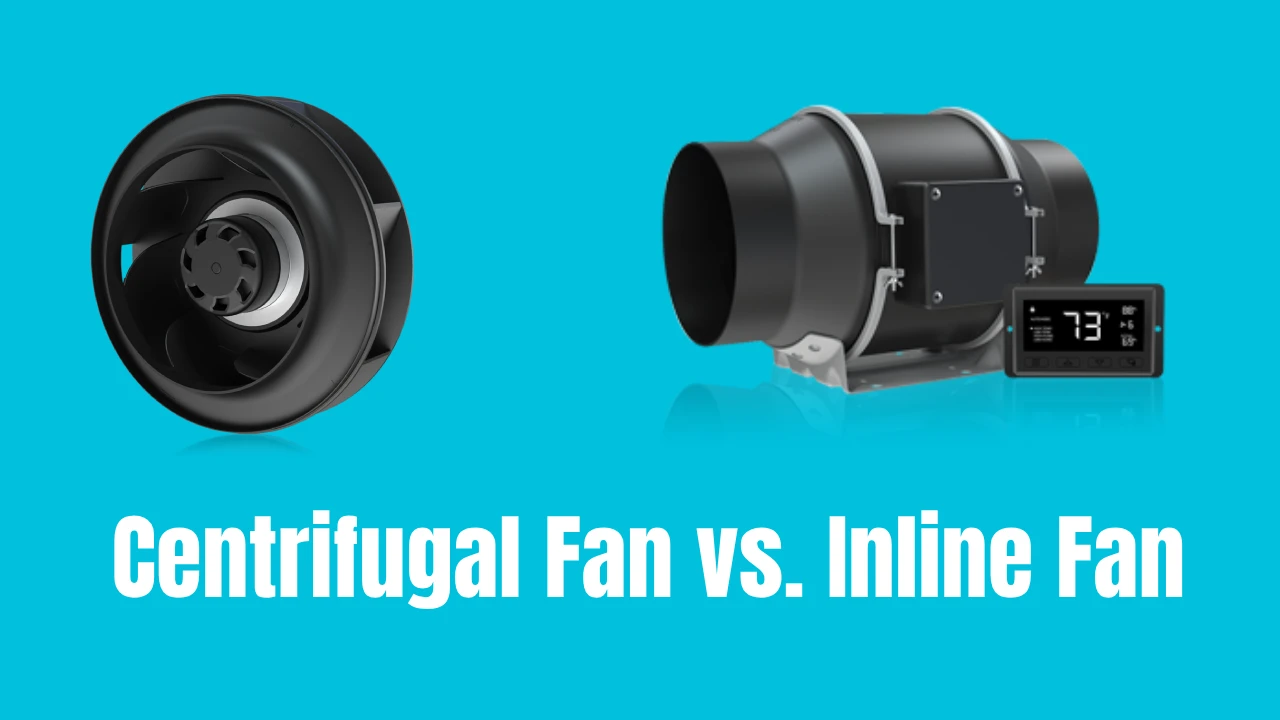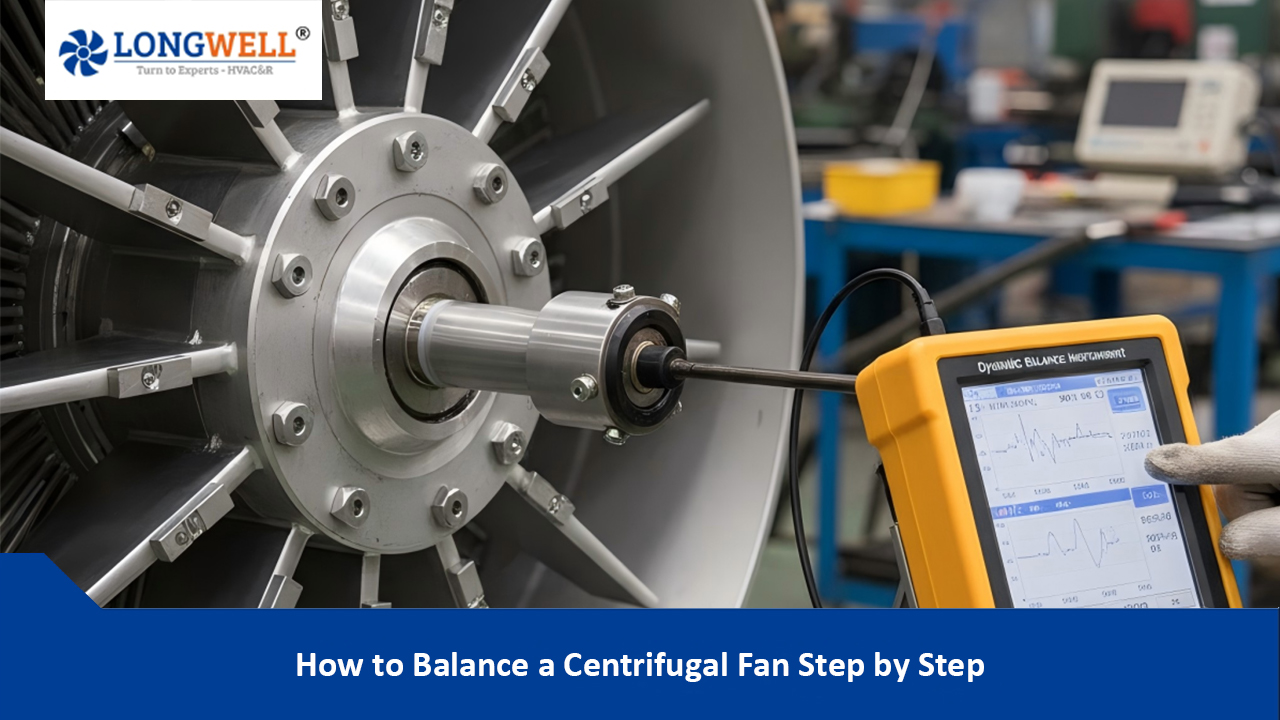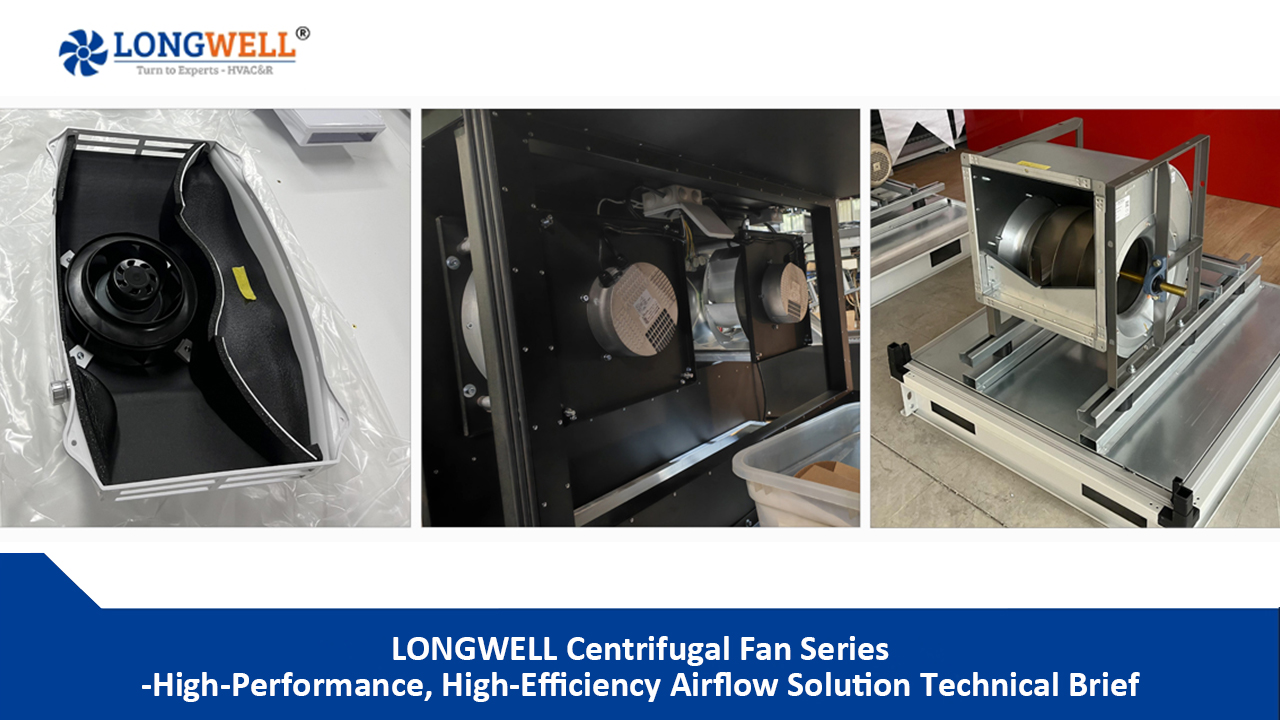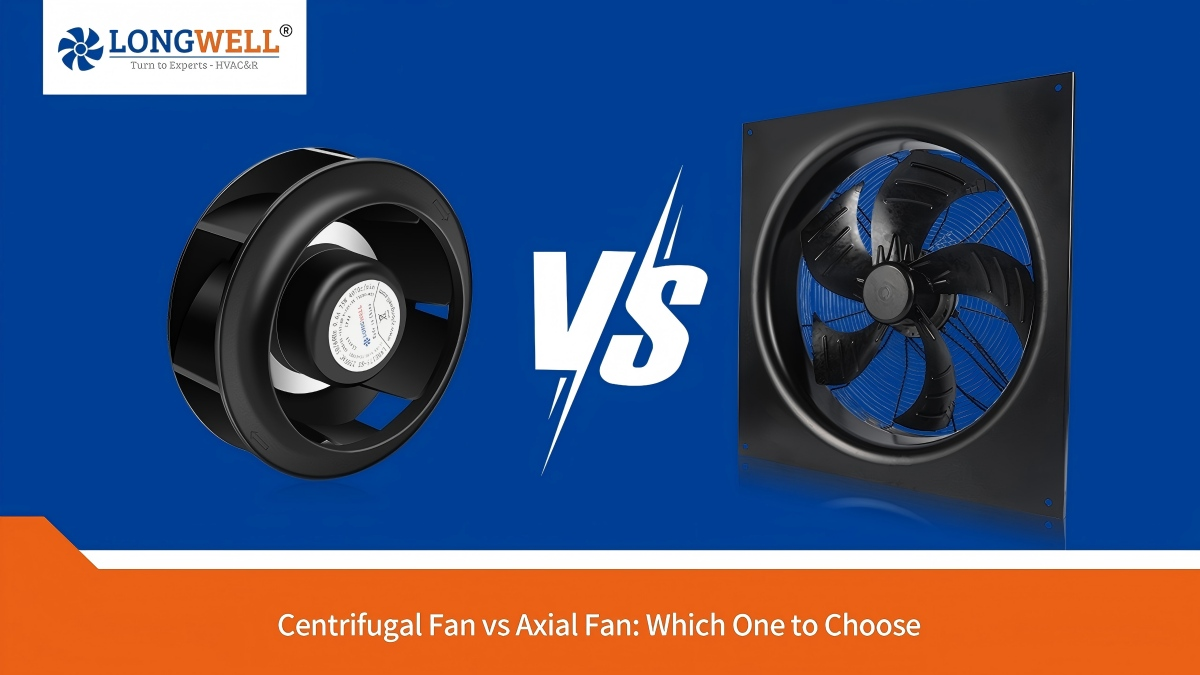
Introduction
Good airflow is important in many places. This includes homes and big factories. Two common types of ac fans used in machinery are centrifugal fans and inline fans. Each type of fan has its own purpose and special features. It is helpful to know how each fan operates. This knowledge will help you choose the right type of fan that fits your needs. This blog will compare centrifugal and inline fans. It aims to help you make a smart choice.
Understanding Centrifugal Fans
Centrifugal fans, or centrifugal blowers, are popular because they create strong airflow. Unlike axial fans that move air straight, centrifugal fans have a spinning impeller. This design pushes lesser volumes of air outwards and makes a pressure difference. This pressure causes air to move in both directions, creating good suction. Their special way of working makes them great for areas needing higher static pressure, higher directionality, and targeting a specific area. You can often find several types of centrifugal fans in HVAC systems and industrial exhaust systems.
Definition and Basic Mechanism
A centrifugal fan uses centrifugal force and air pressure to work. Inside, there is a piece called an impeller that spins around a fixed axis. The fan features a large casing called a volute, which has a circular hub. The impeller has blades that pull in much air to the center. As the impeller spins, the blades push energy into the air, sending it outward into the volute. The wider part of the casing turns this energy into static air pressure. In the end, the pressurized air comes out through the outlet of the fan. This process creates a steady flow of high-pressure air. That’s why centrifugal fans are helpful in many areas.
Common Uses in Industries
Centrifugal fans are very important in many industries. They handle high-pressure needs very well. Their strong, durable, and lasting design helps them work efficiently, even in difficult conditions. This makes them ideal for managing hot air and particulates in various situations. You will often see centrifugal fans in these places:
- HVAC systems: You can find these in air conditioning units and ventilation systems. They help move air through ducts and keep the right temperature and airflow.
- Industrial Processes: Centrifugal fans are key for drying systems, ovens, and furnaces. They provide good airflow to transfer heat effectively and remove moisture.
- Industrial Ventilation: Places like foundries and manufacturing plants need centrifugal fans. They assist in removing fumes, collecting dust, and managing air quality.
Exploring Inline Fans
Inline fans, known as axial inline fans or duct fans, are a type of fan designed for easy installation in ductwork. They mainly improve air flow in HVAC and ventilation systems. These fans are good at moving high volumes of air while using a lot less power. This feature is especially useful when you have long duct runs or when there is resistance from bends and filters.
Core Functionality and Design
Inline fans are small and round. They fit nicely into the ductwork you already have. They are different from centrifugal fans, which use centrifugal force. Inline fans have fan blades that are like those on a propeller. These blades pull air in and push it out in the same direction. This is why we call them ‘inline.’ Their simple design helps create a strong path for air movement and airflow in the duct system. Their compact shape allows for good airflow, often measured in CFM (Cubic Feet per Minute). Because of this, inline fans are perfect for many uses.
Typical Applications
Inline fans are useful devices found in homes, offices, and factories. They help with airflow and ventilation. These fans are compact and easy to install, making them ideal for tight spaces. Here are some common uses:
- HVAC Systems: Inline fans help improve airflow in HVAC systems. They are effective in homes or buildings with long ducts or complicated layouts.
- Exhaust Ventilation: Places like bathrooms, kitchens, and grow rooms often use inline fans as exhaust fans. They effectively remove moisture, bad odors, and heat.
- Air Intake Systems: Inline fans can also bring fresh air into buildings or closed areas. This boosts ventilation and improves indoor air quality.
Key Differences Between Centrifugal and Inline Fans
Centrifugal fans and inline fans help move air, but they work differently. Each has special features that suit different needs and spaces, including different sizes suited for various applications. To pick the best fan type, you must know the main differences. These differences include how much airflow each provides, the noise they create, and how they are installed.
Airflow Characteristics
A main difference between centrifugal and inline fans is how they move airflow and handle ducting pressure. Centrifugal fans create higher pressure airflow. This allows them to push air through long ducts and tricky paths. They can move air over long distances and handle obstacles like bends and filters well. In contrast, inline fans are great at moving a lot of air quickly, but they produce lower pressure. They work best in situations where you need to move a lot of air fast, instead of dealing with static pressure.
| Feature | Centrifugal Fan | Inline Fan |
|---|---|---|
| Airflow direction | Perpendicular to the intake | Parallel to the intake |
| Pressure capability | High | Low |
| Applications | HVAC systems, industrial processes, exhaust ventilation | HVAC booster fans, exhaust ventilation in smaller spaces, air intake |
Noise Levels and Installation
Noise level is very important when choosing between centrifugal and inline fans. Centrifugal fans are strong and work well under high pressure. However, they are often noisier because of how they are built. Inline fans, in contrast, have a simpler axial design and run at lower speeds, which makes them quieter.
When it comes to installation, inline fans are a better choice. Their compact shape allows them to fit easily into existing ductwork. They usually need fewer changes to set up. On the other hand, centrifugal fans have a more complex design for housing and duct connections. This makes their installation more challenging.
Conclusion
In conclusion, it’s vital to understand the differences between centrifugal and inline fans. This knowledge will help you pick the right fan type for your needs. Centrifugal fans work well for various industrial jobs. Inline fans are designed to save space. When making your choice, think about airflow, noise, and how easy it is to install. If you want energy efficiency or specific features, choose the fan that best matches your needs. For more details or help selecting the right fan for your setup, check our FAQs section or ask our experts.
Frequently Asked Questions
Which fan type is more energy-efficient, centrifugal or inline?
Inline fans usually save more energy than centrifugal fans. They have a simple design and operate at slower speeds. This allows them to use less energy while still providing good airflow. However, their efficiency can change based on the fan model. The design of the motor and the shape of the blades can influence how well they perform.



